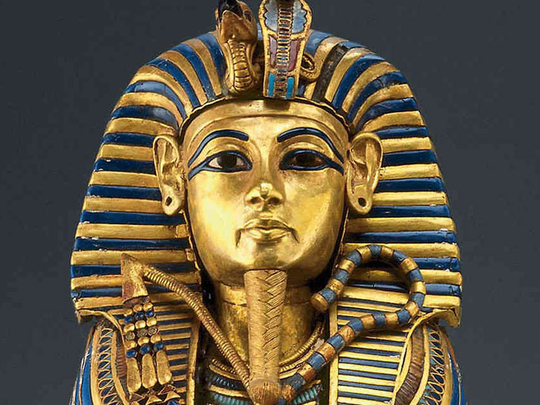
Cairo: At first sight, there is nothing unusual about the iconic burial mask of Pharaoh Tutankhamun. But a closer look at the gold relic on exhibit at the Egyptian Museum in Cairo will show scratches and a tiny slant of the attached beard.
Conservators attribute the damage to an allegedly sloppy attempt to reglue the beard after it was accidentally knocked off during cleaning last year.
The disclosure has made local and international headlines, with some critics branding the situation “Tut’s disgrace”.
“The mask has been restored in a mistaken way that does not conform to the professional conservation standards,” said Amir Jamal, an Egyptian archaeologist. According to him, the beard of the mask was accidentally knocked off in October when the curator of the museum ordered the 3,300-year-old mask be dusted off.
“Non-specialists hastily used epoxy to glue the beard back on the mask. The use of this adhesive resulted in disfiguring the mask. This sloppy handling also exposed ignorance of the techniques employed by Ancient Egyptians, who used the removal and refixing way with these items,” Jamal added. “This explains why the beard was located lying next to the mask when they were discovered.”
The 11-kilogram burial mask made of pure gold along with the pharaoh’s almost intact tomb were discovered by British archaeologists Howard Carter and George Herbert in the Valley of Kings in South Egypt in 1922. The relics, which were put on public display 20 years later, are a centrepiece of attractions at the Egyptian Museum. Photography of the items there is banned.
Egyptian Minister of Antiquities Mamdouh Al Damati dismissed the controversy over King Tut’s beard as a media exaggeration.
“The mask is in a good condition and there is no danger to it,” he told a press conference in Cairo this week. “The pictures carried by media purporting serious damage to the mask have been doctored.”
However, the official admitted that an “excessive amount of epoxy” had been used in gluing the beard. “Conservators have different views about the use of epoxy in restoring antiquities and metals. The King Tutankhamun’s beard was not attached to the mask when they were discovered in 1922. It was glued on it later.”
Al Damati said the incident involving the beard occurred in August, but it was divulged to the media only in recent weeks due to what he called “differences among museum officials”.
He vowed an official inquiry into the incident and punish “anyone to be found guilty of negligence”.
German expert Christian Eckmann, summoned by Egyptian authority to examine the mask, said that epoxy can be removed and the relic can be properly restored.
He told the same press conference that a committee comprising conservators, archaeologists and natural scientists will be formed to draw up a plan to restore the beard.
According to historians, Tutankhamun, also known as the boy king, was nine years old when he became a pharaoh in the 18th Dynasty. He reigned for about nine years.












